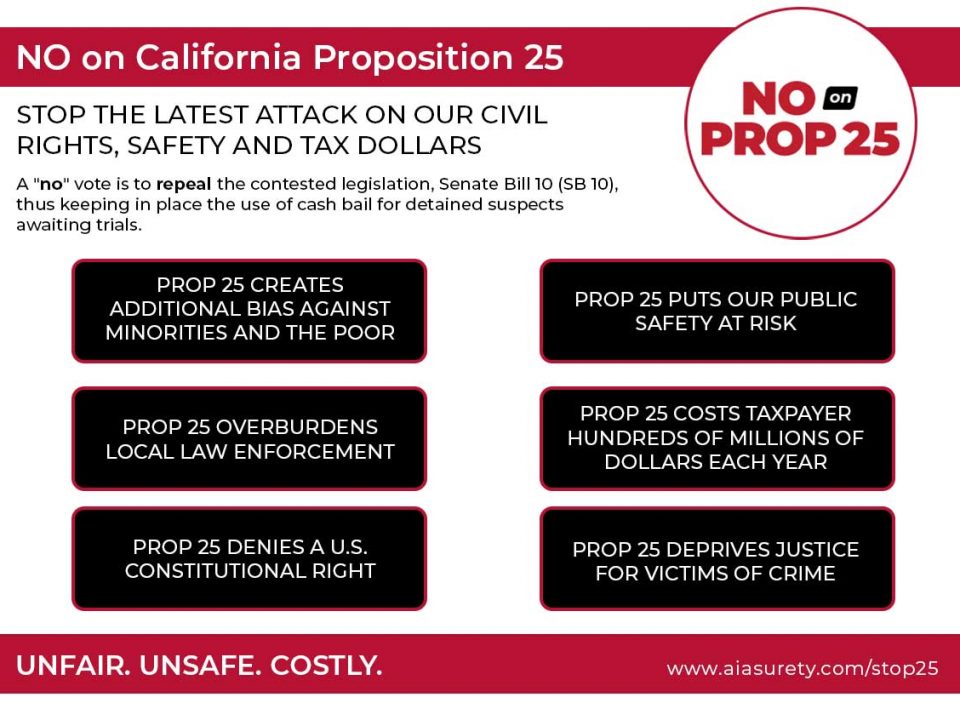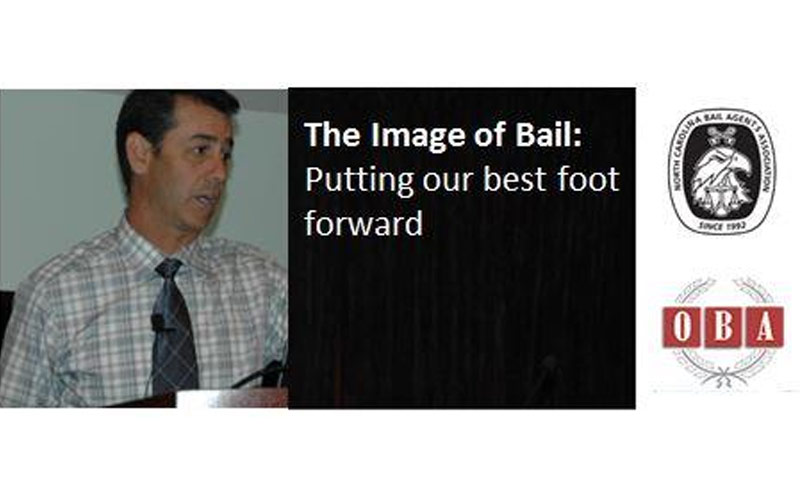- Need a bail bond?
- (800) 938-2245
- [email protected]
A New Look at Pretrial Release Reform: A Bail Persective
THE NATION'S LARGEST BAIL BOND NETWORK
(800) 938-2245

FIND A LOCAL BAIL BOND AGENT NOW
The ExpertBail Network is comprised of the industry’s best, most experienced and most trusted bail bond agents.
- Nationwide bail bonds. Anywhere. Anytime.
- Largest network of local bail agents in every state bail can be written.
- Raising the standards in the bail industry.
- Fast and Reliable.
- Se Habla Español.

Check out the new op-ed piece published this morning on the Fox & Hounds website. It was written by AIA’s Vice President of Corporate Communications, Eric Granof. The article provides an alternative perspective on the pretrial release reform debate. A perspective of partnership and cooperation. Something that the bail bond industry has proposed for many years to the public sector pretrial community with no response. Below is a short snapshot of the article. A link to the full article is provided below. Once you have read it, please feel free to comment and repost.
Pretrial Release Reform: Less Blame, More Solutions Through Private and Public Partnerships
By: Eric Granof, Vice President of Corporate Communications, AIA
The problem of jail overcrowding continues to surface in many states and counties across the country. This issue has spurred much debate as to its root cause, which some have attributed to the commercial bail industry. While this theory is highly questionable and unsubstantiated, it remains clear that the problem of overcrowding must be addressed by our state and local governments. In order to do so effectively, all players involved must stop pointing fingers and be willing to put their cards on the table and abide by the rules of honesty and fairness.
The real battle behind the jail overcrowding issue is one between the public sector pretrial release community and private sector commercial bail bond industry. This debate has been spurred on by the continued downturn in the economy, strong ideological differences and shrinking public resources. Put simply, the public pretrial release faction argues that our jails are overcrowded because the individuals who have been arrested can’t afford to pay for a bail bond.
The commercial bail bond industry has been in existence since the founding of the United States and is currently utilized effectively in 46 of the 50 states. A defendant (typically through his or her family), pays a premium to purchase a bail bond — essentially a guarantee that he or she will appear in court for trial. Accountability is a key component of the commercial bail system.
Meanwhile, public pretrial programs grew out of the understanding that there are those in society with special needs (e.g., those who are indigent or with substance abuse issues) and who cannot afford to pay for a bail bond.
In the eyes of those in the commercial bail industry, there is a role for both sides in the system. As they see it, those persons who genuinely require special assistance should definitely receive the benefit of “social justice.” This is where public pretrial fills a vital need.
Conversely, those defendants who don’t have special need requirements and are capable of taking care of themselves should – indeed – must be held accountable for the charges for which they have been accused. One could say that these individuals require more “criminal justice” tools and higher levels of accountability, such as those provided by the commercial bail bond industry.
Examining the situation logically, it should be obvious that there is a place for both public sector and private sector solutions to the challenges facing our criminal justice system.
If our communities are to appropriately address jail overcrowding in a balanced and effective way, we must look past hot button terms like “jail bed space” and “quick release,” and focus on more relevant concepts such as “ensuring appearance” and “protecting the public.”
Decisions about pretrial release mechanisms, whether public or private, should never be about jail overcrowding or how fast someone can get out of jail. Rather, they should always be centered on the original intent of pretrial release, which is to ensure the appearance of a defendant at trial (Stack vs. Boyle, 1952). Coupled with the concept of assuring public safety, one has a measuring stick by which all types of pretrial release decisions should be made.
There have been many private and public studies on how to determine the form of pretrial release that best assures appearance. While each study has varied slightly in its objectives the results are consistent. Independently, each has concluded that the most effective way to assure a defendant’s appearance at trial is through a commercial bail bond, which carries with it significant financial responsibility. The results are definitive and have survived all attempts to discredit them. Still, the commercial bail industry also takes the firm stance that they should not be the only form of pretrial release. They believe that there is a role for both public and private sector solutions.
As counties all over the country address their own jail overcrowding issues, it would be prudent to bring together all parties involved. Whether they are private or public entities, it is critical for everyone to work together to find ways to increase the effectiveness and accountability of their criminal justice systems. The stakes are far too high to allow the current situation to continue without a solution.
Read the original article here: Pretrial Release Reform: Less Blame, More Solutions Through Private and Public Partnerships
Learn more about the bail bond process: Bail Bond Questions and Answers
See ExpertBail’s BAIL MONTH FACTS
Read one of ExpertBail’s bail bond blog posts: Bail Bonds and Boo Boos: Fingered by Your Own Finger

Bail Bonds and Backsides: Time to Pull em Up Ladies
November 1, 2013
Bail Bonds, Seatbelts and Soda Cans
November 4, 2013A New Look at Pretrial Release Reform: A Bail Persective

Check out the new op-ed piece published this morning on the Fox & Hounds website. It was written by AIA’s Vice President of Corporate Communications, Eric Granof. The article provides an alternative perspective on the pretrial release reform debate. A perspective of partnership and cooperation. Something that the bail bond industry has proposed for many years to the public sector pretrial community with no response. Below is a short snapshot of the article. A link to the full article is provided below. Once you have read it, please feel free to comment and repost.
Pretrial Release Reform: Less Blame, More Solutions Through Private and Public Partnerships
By: Eric Granof, Vice President of Corporate Communications, AIA
The problem of jail overcrowding continues to surface in many states and counties across the country. This issue has spurred much debate as to its root cause, which some have attributed to the commercial bail industry. While this theory is highly questionable and unsubstantiated, it remains clear that the problem of overcrowding must be addressed by our state and local governments. In order to do so effectively, all players involved must stop pointing fingers and be willing to put their cards on the table and abide by the rules of honesty and fairness.
The real battle behind the jail overcrowding issue is one between the public sector pretrial release community and private sector commercial bail bond industry. This debate has been spurred on by the continued downturn in the economy, strong ideological differences and shrinking public resources. Put simply, the public pretrial release faction argues that our jails are overcrowded because the individuals who have been arrested can’t afford to pay for a bail bond.
The commercial bail bond industry has been in existence since the founding of the United States and is currently utilized effectively in 46 of the 50 states. A defendant (typically through his or her family), pays a premium to purchase a bail bond — essentially a guarantee that he or she will appear in court for trial. Accountability is a key component of the commercial bail system.
Meanwhile, public pretrial programs grew out of the understanding that there are those in society with special needs (e.g., those who are indigent or with substance abuse issues) and who cannot afford to pay for a bail bond.
In the eyes of those in the commercial bail industry, there is a role for both sides in the system. As they see it, those persons who genuinely require special assistance should definitely receive the benefit of “social justice.” This is where public pretrial fills a vital need.
Conversely, those defendants who don’t have special need requirements and are capable of taking care of themselves should – indeed – must be held accountable for the charges for which they have been accused. One could say that these individuals require more “criminal justice” tools and higher levels of accountability, such as those provided by the commercial bail bond industry.
Examining the situation logically, it should be obvious that there is a place for both public sector and private sector solutions to the challenges facing our criminal justice system.
If our communities are to appropriately address jail overcrowding in a balanced and effective way, we must look past hot button terms like “jail bed space” and “quick release,” and focus on more relevant concepts such as “ensuring appearance” and “protecting the public.”
Decisions about pretrial release mechanisms, whether public or private, should never be about jail overcrowding or how fast someone can get out of jail. Rather, they should always be centered on the original intent of pretrial release, which is to ensure the appearance of a defendant at trial (Stack vs. Boyle, 1952). Coupled with the concept of assuring public safety, one has a measuring stick by which all types of pretrial release decisions should be made.
There have been many private and public studies on how to determine the form of pretrial release that best assures appearance. While each study has varied slightly in its objectives the results are consistent. Independently, each has concluded that the most effective way to assure a defendant’s appearance at trial is through a commercial bail bond, which carries with it significant financial responsibility. The results are definitive and have survived all attempts to discredit them. Still, the commercial bail industry also takes the firm stance that they should not be the only form of pretrial release. They believe that there is a role for both public and private sector solutions.
As counties all over the country address their own jail overcrowding issues, it would be prudent to bring together all parties involved. Whether they are private or public entities, it is critical for everyone to work together to find ways to increase the effectiveness and accountability of their criminal justice systems. The stakes are far too high to allow the current situation to continue without a solution.
Read the original article here: Pretrial Release Reform: Less Blame, More Solutions Through Private and Public Partnerships
Learn more about the bail bond process: Bail Bond Questions and Answers
See ExpertBail’s BAIL MONTH FACTS
Read one of ExpertBail’s bail bond blog posts: Bail Bonds and Boo Boos: Fingered by Your Own Finger



